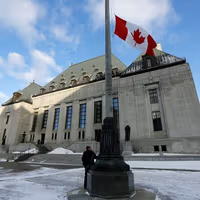Meteorologists say heavy smog will linger over the capital through Tuesday, with fine particulate pollution increasing sharply as calm weather prevents the dispersal of exhaust fumes and industrial emissions.
Officials have urged people to avoid unnecessary travel and limit time outdoors, especially at night and in the early morning when pollution peaks.
The city’s weather bureau warned that without stricter limits on factories and traffic, “air quality could reach very unhealthy levels” and health services should remain ready to respond.
The alert on Friday comes as air quality worsens across several major cities, including Isfahan, Tabriz, Karaj, Ahvaz, and Mashhad.
Recent readings in Tehran placed fine particulate concentrations well above safe limits, posing risks for children, the elderly, and those with respiratory or heart conditions.
Officials say calm winds have turned Tehran into a pollution trap. The Health Ministry estimates nearly 59,000 Iranians die every year from illnesses linked to poor air quality, with economic losses exceeding $17 billion — more than the country’s entire health budget.
Reliance on dirty fuels deepens the crisis
The worsening air coincides with a renewed use of mazut, a heavy, high-sulfur fuel oil, at power plants struggling with gas shortages.
Energy Minister Abbas Aliabadi acknowledged the problem, saying the move was a last resort to keep power stations running during peak demand.
Environmental groups warn that relying on mazut — together with aging cars and weak emissions controls — keeps Iran’s major cities locked in a cycle of toxic air and public health damage.
Authorities have advised residents to wear masks, avoid strenuous outdoor activity, and limit vehicle use.
Experts say the combination of outdated fuel systems, traffic congestion, and winter weather patterns means Tehran is likely to face repeated air-quality emergencies unless major reforms — such as investment in cleaner energy and transport — are implemented soon.













